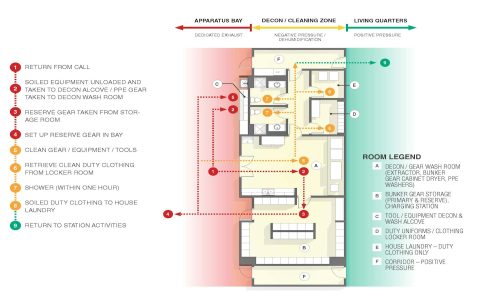The evolution of fire station architecture is increasingly shaped by innovations focused on enhancing operational efficiency, firefighter well-being, and environmental resilience, driving fundamental shifts in design practices worldwide.
Sustainable and Resilient Building Integration
Modern stations prioritize eco-conscious materials like recycled steel and low-VOC finishes, coupled with advanced systems such as solar panels for renewable energy and rainwater harvesting to reduce resource consumption; these features support net-zero goals and climate adaptation.
Health-Centric Spatial Zoning
Innovations include segmented layouts with dedicated decontamination zones to isolate carcinogens, enhanced air purification to mitigate toxin exposure, and ergonomic recovery areas designed to address physical and mental health stressors for firefighters.

Modular and Prefabricated Construction Methods
Utilizing prefabricated modules enables rapid assembly, cost-effective scalability for community growth, and disaster-ready flexibility, allowing easy reconfiguration or expansion as service demands evolve without prolonged downtime.
These trends collectively foster safer, adaptive, and sustainable fire stations poised to meet emerging societal and environmental challenges.






